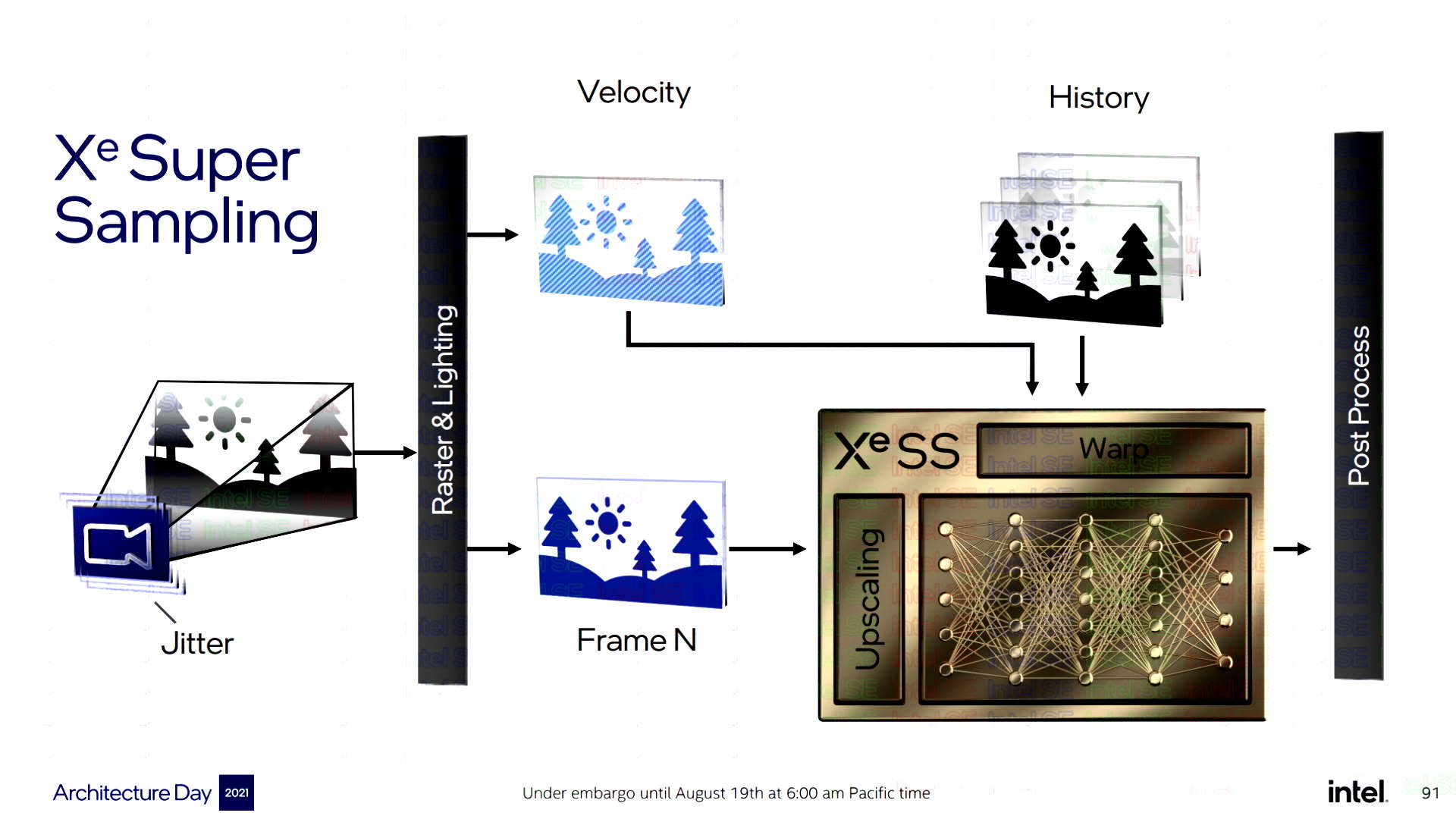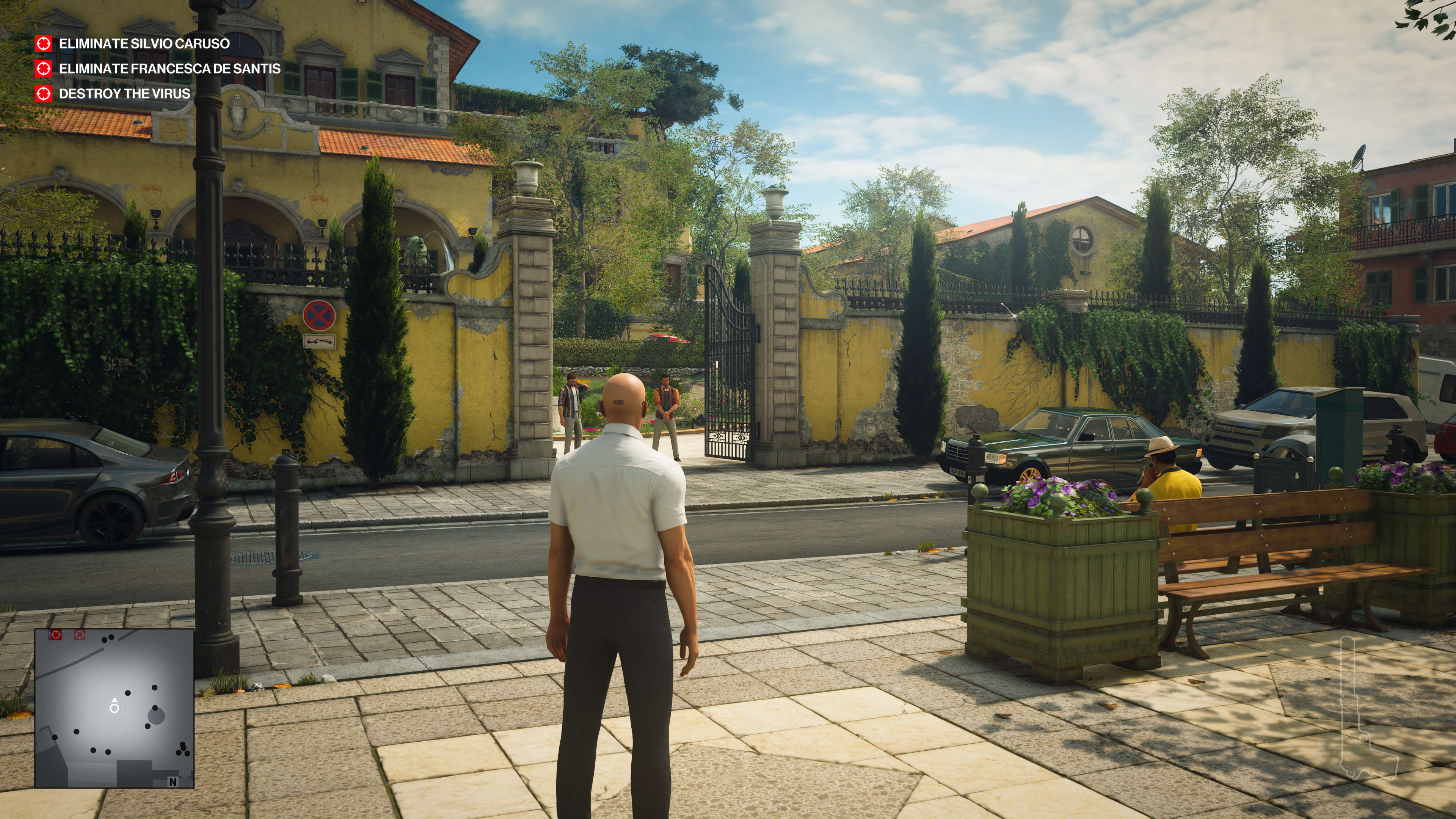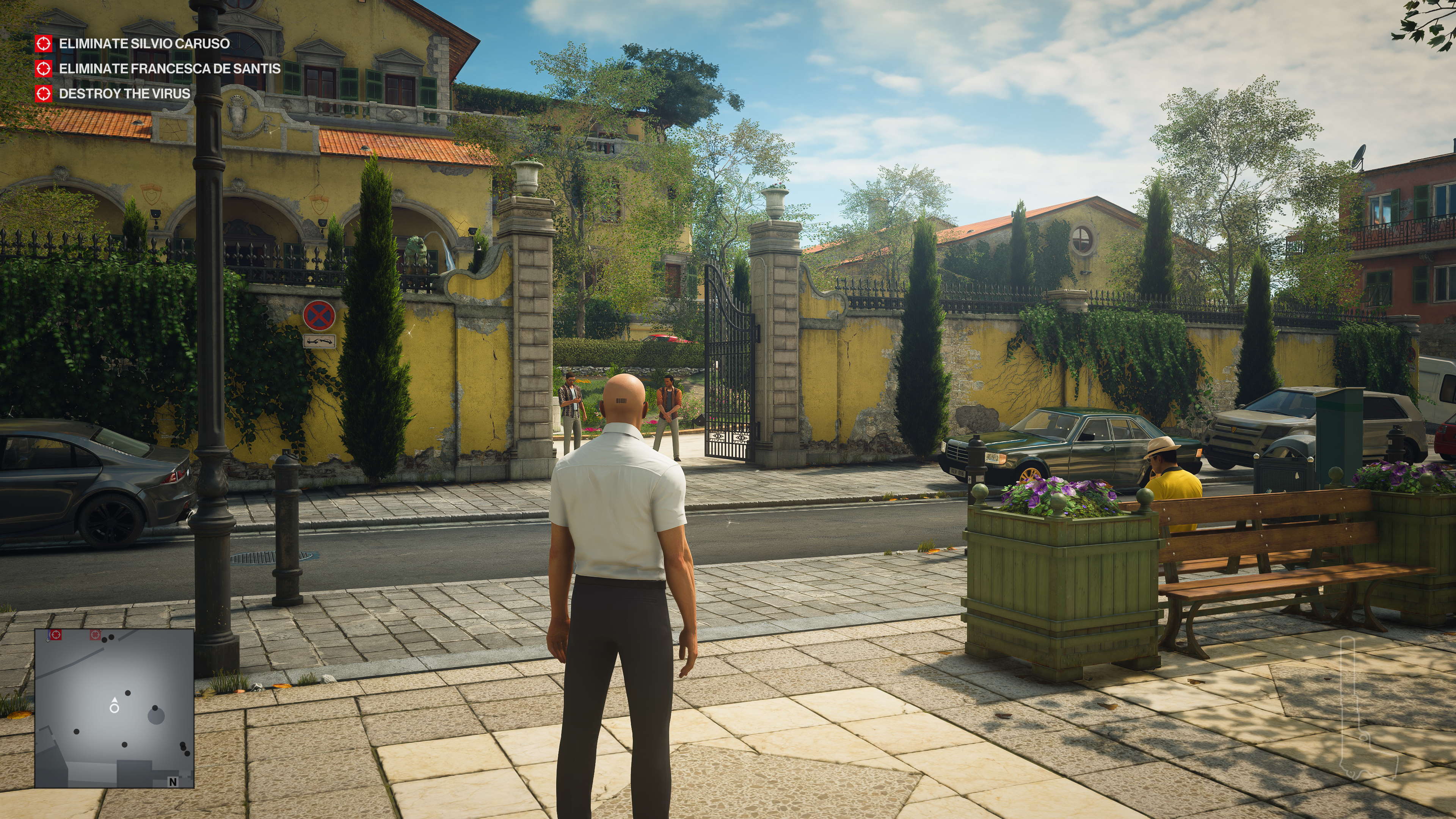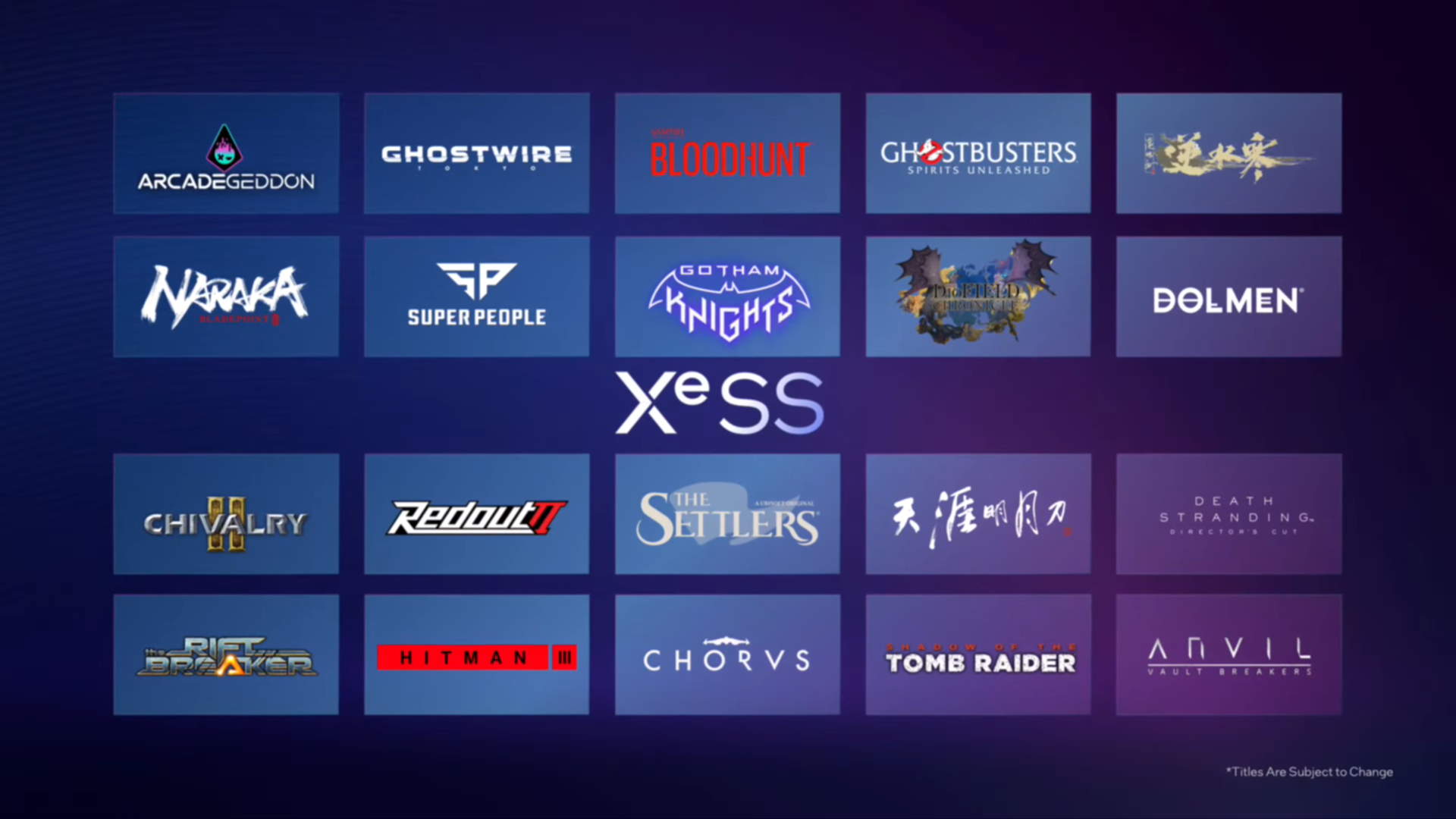Intel XeSS vs DLSS vs FSR: How does Intel's upscaling compare?
Intel's XeSS is an intriguing cross-platform addition to the super sampling genre.

Upscaling. Also known as super sampling. It's the gaming gift that keeps on giving, a technology that costs you nothing but makes games look better and run faster. And it just got that bit more generous thanks to a new arrival on the super sampling scene, namely Intel and its XeSS (Xe Super Sampling) technology.
XeSS is a direct competitor for Nvidia's DLSS and AMD's FSR platforms. Unlike DLSS but in common with the FSR, Intel XeSS isn't tied to any given GPU architecture. XeSS can run on many modern graphics cards, although Intel is also doing another more advanced version of XeSS that takes advantage of the Xe Matrix Extension (XMX) AI cores inside Intel's Arc GPUs, just as DLSS is accelerated by the Tensor Cores in Nvidia GPUs.
What all three of the major super sampling platforms have in common is the basic idea of upscaling image data to higher resolutions. In theory, the result should be both more image detail and more performance.
Also common to all three is a basis on temporal rather than spatial upscaling. In simple terms, that means the upscaling is based on the data from more than just a single reference image frame. Simple spatial upscaling is what a PC monitor can do with its own scaling hardware when running a lower non-native resolution, for instance 1080p on a 4K display. It works well enough, but the result is a soft, slightly blurry image.
With temporal upscaling, it's possible to use the data from multiple frames, not just the frame being rendered, to create a much sharper image that can rival native rendering for clarity and detail while also enabling higher frame rates. Crispy 4K visuals with 1080p or 1440p frame rates, that's the basic idea.
XeSS special sauce

XeSS is the only upscaling tech that both has an AI element and is also cross platform.
Of course, there's more to XeSS than just that temporal approach. XeSS analyses a wide range of image data including motion, color, lighting, and depth, and then feeds it all into an AI engine that performs the upscaling.
The most advanced version of XeSS runs that AI model on the XMX cores in Intel Arc graphics cards, like the A770 and A750. But there's also a version of XeSS that can run on any GPU that supports DP4a AI calculations. That includes all Nvidia GPUs from the GTX 10-series onwards and AMD graphics from the Radeon RX 6000-series.
The biggest gaming news, reviews and hardware deals
Keep up to date with the most important stories and the best deals, as picked by the PC Gamer team.
That puts Intel and XeSS in a unique position. AMD's FSR 2.0 upscaling tech is temporal and cross platform. So, it can run on a wide range of GPUs, not just AMD's. But FSR isn't AI based. Meanwhile DLSS has always been AI accelerated but restricted to Nvidia GPUs. So, XeSS is the only upscaling tech that both has an AI element and is also cross platform.
The upshot is that it's now possible to compare the DP4a version of XeSS with Nvidia DLSS and AMD FSR. all running on the same hardware.
As with other upscaling platforms, XeSS offers a range of quality options. Specifically, you can choose between Performance, Balanced, Quality and Ultra Quality settings. Performance offers the best frame rate boost compared to native rendering, while visual quality increases as you move up through the scale, albeit at the cost of performance. But even at the highest quality settings, you'll get a performance boost compared to running full native resolution.



By way of example, XeSS has a 2x resolution scaling factor running in Performance mode. That means scaling a 1080p image up to 4K. The Quality mode runs at a 1.5x factor, scaling a 1440p image up to 4K, and so on. Broadly, XeSS's scaling factors are comparable to those of DLSS and FSR, so the important differences are in the algorithms and AI models.
Indeed, it's in the finer graphics details that the pros and cons of various upscaling technologies can be seen. How they deal with tricky visual elements like, say, overhead power lines, can set them apart. Fast motion can also be problematic for temporal-based scaling algorithms like XeSS.
That said, one of the most remarkable things about this new class of upscaling technology is that it can sometimes exceed native rendering for pure image quality. The combination of combining the data from multiple frames plus clever image sharpening can actually result in improved texture quality and better overall image clarity than running native resolution. Admittedly, that most often tends to be the case where texture quality is lacking in the first place, but it's a remarkable fact all the same.
How XeSS compares



DLSS generally has the edge, with FSR sometimes generating the softest images and XeSS falling somewhere in between.
Up front and centre, it's worth noting a few things. First, the differences in image quality when comparing XeSS with DLSS and FSR are relatively subtle. You have to look pretty carefully to see the differences. Arguably, that's already a result for Intel—XeSS image quality is definitely competitive.
On the other hand, there are also limitations in terms of ensuring that a like-for-like comparison is being made. Support for these upscaling platforms is on a per-game basis. Any given game might support one, all or none of XeSS, DLSS and FSR. Moreover, that support is a moving target. By way of example, a recent update added XeSS support to Hitman 3, Spiderman Remastered, The Riftbreaker, Redout 2 and Enlisted.
Unfortunately, Intel hasn't published a comprehensive list of supported games, but there are currently in the order of 20+ games and increasing, including Shadow of The Tomb Raider, Call of Duty: Modern Warfare II and Death Stranding: Director’s Cut. But with DLSS and FSR longer established, it's inevitable that XeSS has some catching up to do with game support.

As for how XeSS compares for image quality, it makes for an intriguing contest. In-game, DLSS generally has the edge when it comes to sharpness, with AMD's FSR sometimes but not always generating the softest images and XeSS falling somewhere in between the two.
That subjective in-game impression is confirmed when you zoom into comparative screen grabs. The difference is most obvious in Hitman 3, where DLSS is clearly the sharpest of the three platforms. If you look at the close-in view of a textured wall in Hitman 3, the differences are obvious.




However, in Spiderman Remastered and Dying Light 2 it's almost impossible to tell XeSS apart from DLSS and FSR in-game. Even zooming into the screen grabs, the differences are awfully subtle and in some areas of the image, XeSS arguably does a better job. Take a look at our screen grabs and decide for yourself.
That underlines the fact that implementations vary from game to game. For instance, the level of image sharpening applied can make a big difference. If anything, by default DLSS can be over sharpened, while the difference between all three platforms can often be narrowed by adjusting the sharpening setting within the in-game XeSS, DLSS or FSR menus.
How XeSS performs



Of course, achieving higher frame rates is the ultimate reason why XeSS, and indeed DLSS and FSR, exist. So, how does Intel's take on upscaling fare when it comes to performance?
We picked an Nvidia card, the RTX 4080, for this test so that we could compare all three versions of upscaling on the exact same test platform.
In Hitman 3 at 4K running in Quality mode in all three platforms, XeSS is a little off the pace for pure frame rates. Running on an Nvidia GeForce RTX 4080 GPU, XeSS cranks out 170fps to DLSS's 188 and FSR's 191. That said, XeSS actually has the edge in Hitman 3 for minimum 99th percentile frame rates at 64fps versus 40fps for FSR and 45 for DLSS.
In Dying Light 2, XeSS is once again slower in terms of average frame rates. Using the same 4K Quality setting on an RTX 4080, XeSS hits an average of 66fps, with DLSS on 70fps and FSR on 68fps.
All told, XeSS is an intriguing addition to the upscaling genre. It's great that Intel has not only made it cross platform, but also found a way to do that while retaining some AI processing elements. For image quality, XeSS is certainly in the right ballpark and while the performance arguably isn't quite as competitive, it's still early days for the technology.
Probably XeSS's most obvious shortcoming is game support. But with the number of supported titles now building some momentum, if Intel can keep adding to the list of XeSS-compatible games, it won't be long before it's fully competitive in that regard, too.

Jeremy has been writing about technology and PCs since the 90nm Netburst era (Google it!) and enjoys nothing more than a serious dissertation on the finer points of monitor input lag and overshoot followed by a forensic examination of advanced lithography. Or maybe he just likes machines that go “ping!” He also has a thing for tennis and cars.

